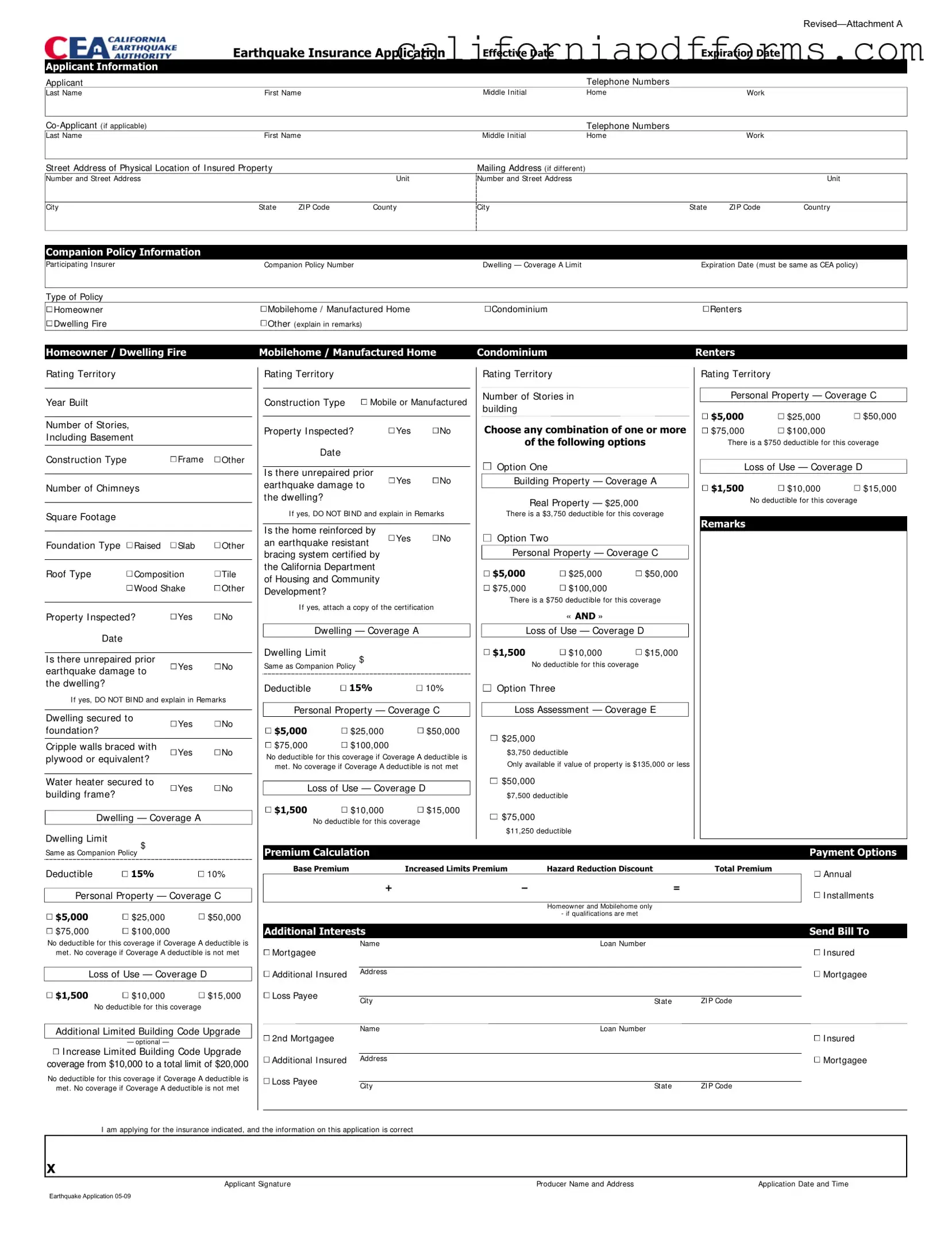The CEA form is an application for earthquake insurance coverage in California. This insurance helps protect homeowners and renters against financial losses due to earthquake damage. By filling out this form, applicants can secure coverage that complements their existing home insurance policies.
Anyone who owns a home, mobile home, or condominium in California and wants earthquake insurance should complete this form. Renters can also apply for coverage to protect their personal belongings. It's essential for anyone living in an earthquake-prone area to consider this insurance.
You will need to provide several key pieces of information, including:
-
Your name and contact details.
-
The address of the property you want to insure.
-
Details about any existing insurance policies, known as companion policies.
-
Information about the construction type, age, and condition of your property.
-
Coverage limits and deductibles you wish to select.
What is a companion policy?
A companion policy is your existing homeowners, renters, or fire insurance policy that the CEA policy will complement. The CEA requires this information to determine the appropriate coverage and limits for your earthquake insurance. It’s important that the companion policy is active and meets specific criteria set by the CEA.
How do I calculate the premium for the earthquake insurance?
The premium calculation involves several factors, including:
-
Your base premium, which is determined by the type of coverage you select.
-
Any increased limits you may choose.
-
Discounts for hazard reduction measures you have taken.
-
Your total premium will be the sum of these components.
Make sure to review all options carefully to understand how they affect your premium.
What should I do if my property has unrepaired earthquake damage?
If your property has unrepaired earthquake damage, you should not bind the insurance. Instead, you need to explain the situation in the remarks section of the application. The CEA may require you to address these issues before coverage can be approved.
Can I choose my payment option for the insurance premium?
Yes, you can choose how you want to pay your premium. The options typically include an annual payment or installment payments. Selecting the option that best fits your budget is important, as it can impact your overall financial planning.
Once you have completed the form, ensure that all required fields are filled out, and you have signed it. You can then submit it to your insurance agent or the California Earthquake Authority directly, depending on the process outlined by your insurance provider. Keep a copy for your records.
